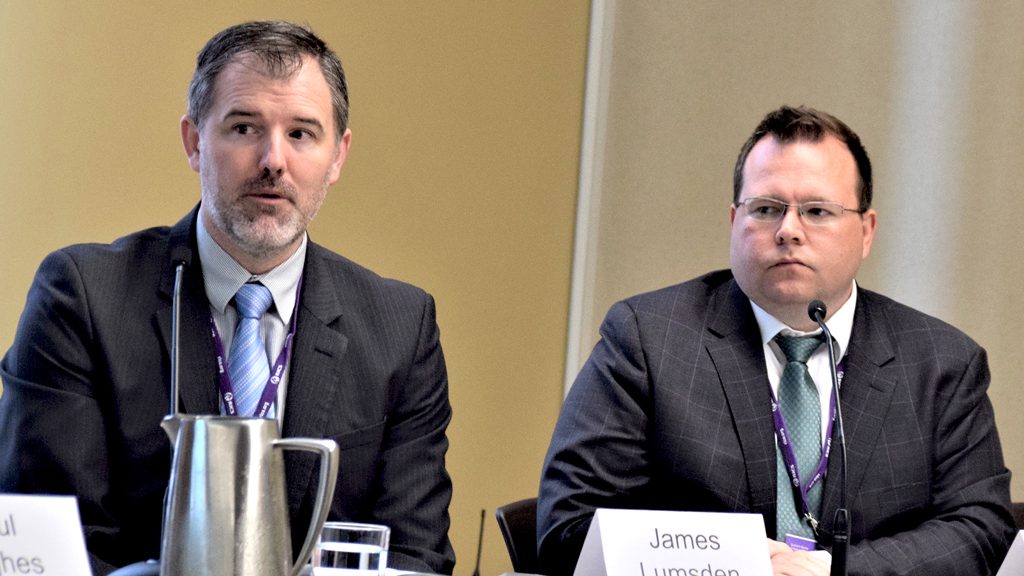Delegates attending the recent Royal Institution of Chartered Surveyors (RICS) conference in Toronto were told to roll up their sleeves and promote the adoption of the newly unveiled International Construction Measurement Standards (ICMS).
Five RICS advocates for the new system highlighted multiple benefits at a seminar held as part of the RICS Summit Series Americas event held June 4 but when asked to enumerate hurdles to widespread uptake of ICMS throughout the sector it became apparent those were numerous as well.
The new standards for project measurements approved by the international ICMS Coalition last summer will enable better comparison of proposals and projects, which will improve investor confidence, enhance competitiveness and productivity, reduce risk and lower costs, the five costing professionals told delegates.
“Standardization really is the key in an era when globalization brings industries together, when people start discussing costs per square foot or per square metre or per linear metre of track with an LRT,” said Susan Neil, executive vice-president at the Canadian quantity surveying firm Hanscomb. Chartered surveyors are called quantity surveyors in Canada.
“It is really important we all are using information the same, speaking the same language.”
There is no point in us doing it if contractors and subcontractors aren’t doing it as well
— Darren Cash
BTY Group
Seminar moderator Gareth David, chief estimator at PCL Constructors Westcoast Inc., offered an example of a complex project in the U.K. The £20-billion Hinkley Point nuclear power plant project is the first such build to be undertaken in the U.K. since 1995 and to pull it off the British government has had to enter into agreements with French government-controlled Electricite de France and China General Nuclear Power Group, a state-run Chinese energy company.
Without common standards for terminology, measurements, methods, data use, costing and more, there is a risk a project like Hinkley Point could degenerate into unnecessary complications, disputes and cost over-runs, said Davies.
The guiding principles for the 45 national bodies that set up the ICMS, Davies explained, were “to have a truly collaborative organization, owned by all people working in the construction industry, with standards set by independent experts, with a high-level framework that can be adopted by all parties.
“It is not just an academic exercise, it needs to resonate and be something fundamental to what we do.”
Uncertainty and price swings undermine investor confidence, which leads to fewer bidders and higher costs that are difficult to predict, the delegates were told.
“In order for us to predict costs more accurately we need some benchmarks we can rely on to put our best foot forward,” commented panellist Darren Cash, a regional director for BTY Group.
But while quantity surveyors, project owners, rating agencies and procurement agencies like Infrastructure Ontario — an active supporter of ICMS, it was noted — can readily see the benefits of the new process, other players such as contractors need convincing, said Cash. For them, it is another layer of obligation without an obvious payoff.
“There is no point in us doing it if contractors and subcontractors aren’t doing it as well,” Cash said, noting if that is the case, the interpretation of data that contractors provide will be different in each jurisdiction.
“You are asking people to do a lot more work. That becomes a challenge,” commented panellist Paul Hughes, a senior director with Altus Group.
Other hurdles identified include reaching out to other stakeholders such as BIM to ensure they are onside; ensuring attitudinal issues and soft costs are incorporated into the new rigid costing; determining whether and how to mine data from past projects and incorporate it into the ICMS format; taking the time to train staff and consultants; ensuring no-one is allowed to tinker with the new standards, which would defeat the purpose of global uniformity; and even obtaining support from British chartered surveyors, who, it was noted, invented the profession and might tend to view new global standards as an intrusion on their turf.
And then there is the challenge of just getting started on a complicated new practice.
Panellist James Lumsden, an associate director with Turner and Townsend, said he had just returned from a session where ICMS was being addressed.
“It became apparent pretty quickly that applying and understanding ICMS would be challenging,” he said. “Like most things there is a learning curve.”
Davies said in an interview the key to obtaining buy-in from the construction sector is educating other stakeholders on how they will benefit. That will require time and effort.
“I think it is ongoing education to the industry and the benefits they are going to get from this, improved knowledge of why we are doing ICMS,” he said. “Better consistency and reliability of costs means there are going to be more projects and more employment going forward so that will be I think the tag.”











Recent Comments
comments for this post are closed